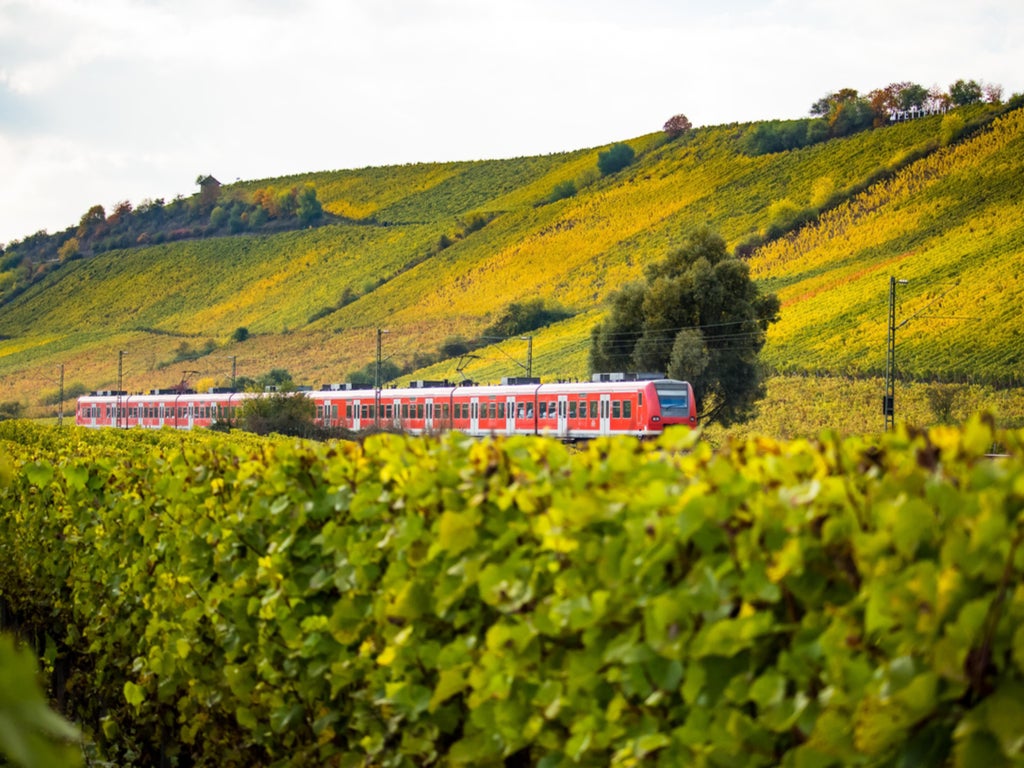
To experience the joy of continental rail travel, try Eurocity train number nine. Each day at 6.29am, the “classic” express departs from Altona station in Hamburg (just up from the fish market, where you can get an even earlier breakfast), gathers passengers at the city’s magnificent Hauptbahnhof, then gathers speed as it rolls across the north German plain to Bremen and Osnabruck.
On through the Ruhr, dawdling at Dusseldorf before converging with the Rhine to race upstream while the river meanders downstream.
Shortly afterwards, if you are fortunate to be in first class, you might find yourself in the excellent company of Nicky Gardner – co-author, with her partner Susanne Kries, of Europe by Rail. The 17th edition of this essential guide has just been published, fully updated and with some new routes – including “an especially nice one from Vienna to Trieste which recreates the heyday of Habsburg transport”.
Imperial resources are not required to travel on train number nine. Even a “walk-up” ticket costs just €10 (£8.50) for each hour on the rails – though you will need to pay slightly more to join Nicky for her most indulgent stretch of the journey: south from Cologne, in first class.
“I would take coffee in the panorama car on the train then move to the next carriage, which is a lovely Swiss car, and lunch as we cruise up the Rhine.”
South from Koblenz, the banks of western Europe’s great artery crowd in, revealing spectacular riverscapes with every swerve. Beyond Karlsruhe the Rhine forms the international frontier with France. The Black Forest rises to the east of the line, and, later, the Vosges to the west.
“We reach the Swiss border by late afternoon, by which time I would be back in the panorama car,” says the Europe by Rail author.
Eurocity nine traces a route followed by countless Interrailers, taking advantage of the unlimited travel pass that was created in 1972.
“They set off with their backpacks, their guitars and their enviable capacity to sleep almost anywhere. Ultimately they didn’t quite mind whether they got to Menton, to Milan or to Montelimar. It was the journey that mattered.”
Fortunately, coinciding with the new edition is a once-in-a-half-century half-price offer on Interrail. A month’s limitless travel on the rails of continental Europe costs just £281 (or even less if you happen to be under 28 or over 59), with a second month for just £26 more.
“Fifty years of Interrail is something that certainly deserves to be celebrated,” Nicky says. “Interrail has been a tremendous unifier.”
Ironically, British travellers may not be able to take full advantage of the three-month pass (£379, under a fiver a day for the freedom to hop around Europe) because of Brexit. The 90-day limit on trips to the EU to which the UK chose to become subject means that if you start today, and you will have to hurry home a day or two early, then stay out of the European Union (and hangers-on such as Switzerland) for a further 90 days.
Train number nine draws into Zurich at 5pm. In the course of a day, it has paused at a dozen fine cities: on the final stretch alone, Baden-Baden, Freiburg and Basel all deserve your time and attention. But Nicky celebrates “just wandering”.
“We all lost sight of the journey as being something virtuous and good in its own right,” she says. “It was probably around the days that discount airlines took off in the 1990s.
“Since then so much of the emphasis in travel has been on the destination. The journey has been seen as something that rather gets in the way. Anticipation of arrival eclipses our enjoyment of the journey.
“Interrail has put the emphasis back on the journey. I think that’s something to cherish in this 50th year of the scheme.”







